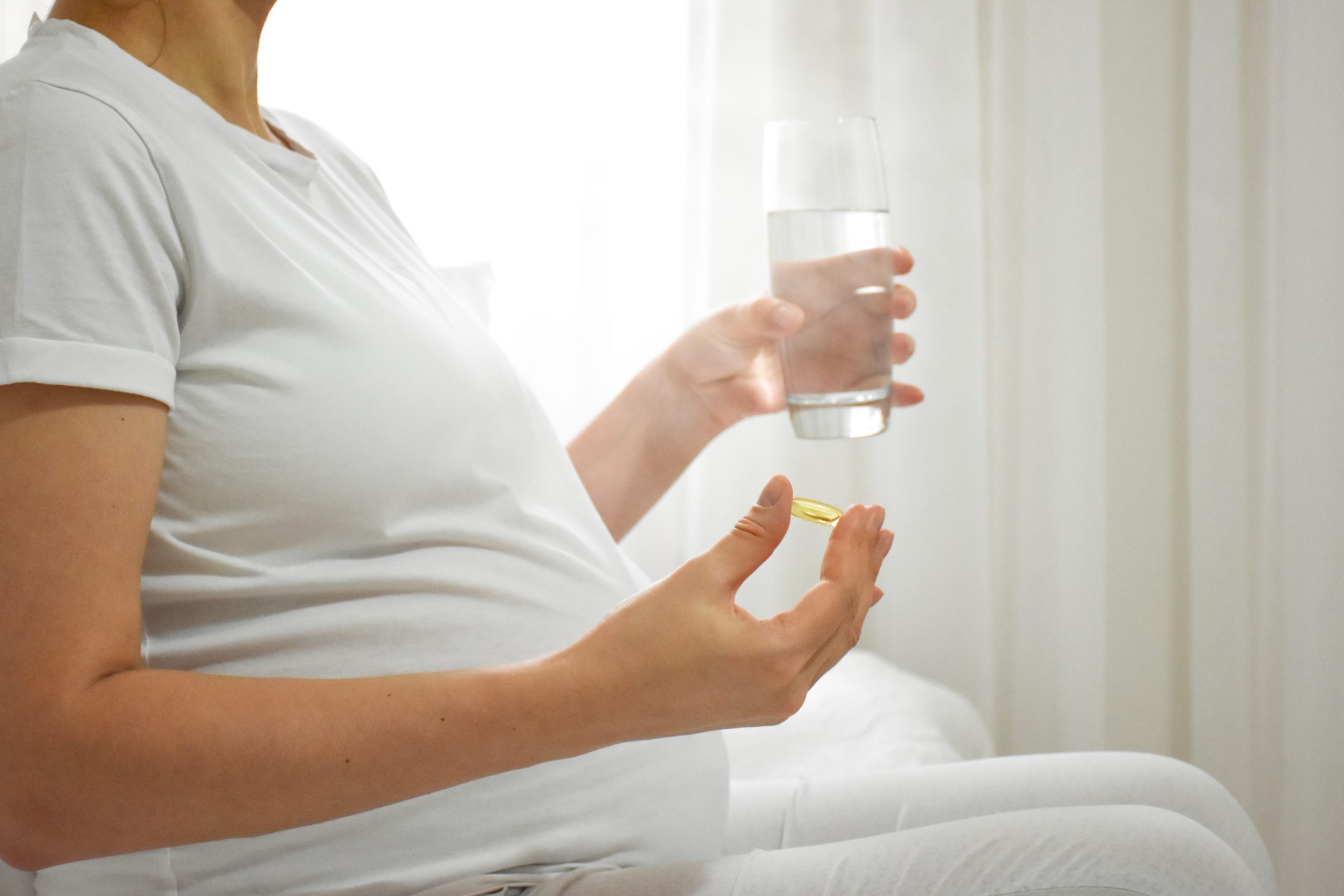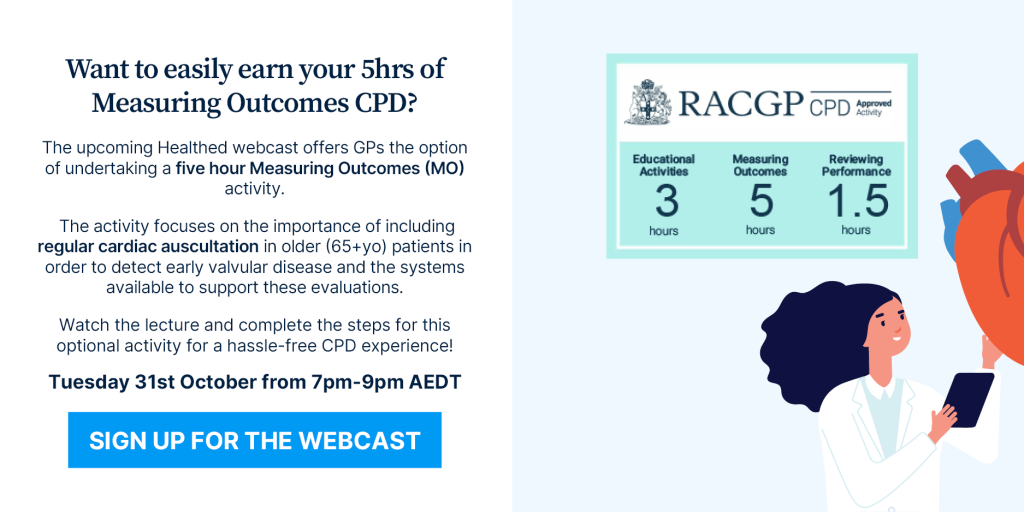Page 104 of 127
Don’t hold back on giving patches to pregnant smokers
All pregnant women who are smokers should be offered nicotine replacement therapy (NRT) as an option to help them quit, Australian researchers say.
In a review published in the MJA, authors said that even though there was a general acknowledgement that there was no firm evidence that proved NRT was safe or effective in pregnancy, all the current guidelines recommend its use for women who couldn’t quit without medication.
In a nutshell, NRT is safer than smoking, and smoking during pregnancy is the most important preventable risk factor for poor maternal and infant health outcomes, they said.
Despite this, there appears a reluctance among doctors, both here and around the world to prescribe the therapy to pregnant women.
The researchers cited a recent survey of Australian GPs and obstetricians that found one in four said they never prescribed NRT in pregnancy.
One possible reason for this reluctance, they suggest is the caveats and cautions included in many of the guidelines. Phrases such as ‘only if women are motivated’, ‘only give out two weeks’ supply’ and ‘under close supervision’ hardly inspire confidence in the safety of the therapy.
“Ambiguous messages may be contributing to the low NRT prescribing rates and, therefore, it is important to provide a clear practical message to health practitioners and women,” they said.
After analysing the various guidelines, the researchers suggest using the strength of the urge to smoke as well as how frequently the urge to smoke occurs to help assess when a woman needs to start or increase the dose of their NRT.
“The most important guidance for NRT in pregnancy is to use the lowest possible dose that is effective. However, to be effective, women should be instructed to use as much as needed to deal with cravings,” they advised.
They also recommend women be encouraged to use NRT for at least 12 weeks or longer if required to ensure they don’t relapse.
All smokers who are pregnant should be told “There is nothing better for you and your baby’s health than to quit smoking.”
Ref:
MJA Online first 4.12.17 doi:10.5694/mja17.00446

Tags: Addiction Medicine, Obstetrics and Gynaecology, Respiratory
December 5, 2017
Understanding Victoria’s new assisted dying laws
Victorians with a terminal illness will be able to request an assisted death from the middle of 2019, after the state’s parliament became the first in Australia to legalise voluntary assisted dying. Victorian residents over the age of 18, of decision making capacity, who have six months to live and are in intolerable suffering can be granted access to lethal medication to end their life.
Eligibility is extended to 12 months for those with neurodegenerative conditions, such as motor neurone disease, multiple sclerosis and Alzheimer’s disease.
Here are five articles in The Conversation’s coverage leading up to the passing of the bill, that will give you a better understanding of what’s in it, the issues in the debate and what drugs might be offered for those who request access to assisted dying.
1. What’s in the bill?
Victorian Premier Daniel Andrews has said the safeguards in this legislation make it the safest and most conservative model in the world.
The Voluntary Assisted Dying bill was drafted after several reports based on extensive consultations with relevant stakeholders.
After a parliamentary inquiry into end-of-life choices delivered recommendations in December 2016, the Victorian government responded by setting up an independent panel of experts to propose what would be in the bill. Chaired by former president of the Australian Medical Association, Professor Brian Owler, the panel’s report was delivered in July 2017.
Ben White, Lindy Willmott and Andrew McGee, from Queensland University of Technology, wrote at the time:
The panel has proposed a very rigorous process – comprised of 68 safeguards – that involves three separate requests for voluntary assisted dying (one which is witnessed by two independent witnesses) and two independent medical assessments.
Read more about the panel’s recommendations that informed the final bill here:
Victoria may soon have assisted dying laws for terminally ill patients
2. Why did some oppose the bill?
After a 47-37 conscience vote in favour of the bill in the lower house on October 20, 2017, the legislation went to the upper house, where it faced some heavy opposition.
The team from Australia’s Centre for Health Law Research at QUT categorised the reasons MPs voted “no” into four themes:
[…] the bill doesn’t have adequate safeguards to protect the vulnerable; legalising assisted dying presents a slippery slope; palliative care services must be improved first; and a doctor’s duty is to treat, not to kill.
Four reasons Victorian MPs say ‘no’ to assisted dying, and why they’re misleading
3. What were the amendments?
The upper house passed the legislation only after taking in some amendments. The main of these is a change to the time an eligible patient has to live, from 12 to six months. There are exceptions though, for people with neurodegenerative conditions, such as motor neurone disease and multiple sclerosis, who can apply for assistance to die up to 12 months before their expected death.
Professor Colleen Cartwright argues such strict prognoses are problematic, as doctors generally struggle with predicting how long someone has to live, and many tend to overestimate the time. She writes:
A review of studies exploring predictions of survival in palliative care for patients with a range of illnesses found that doctors’ predictions were ‘frequently inaccurate’. Estimates ranged from an underestimate of 86 days to an overestimate of 93 days.
The six-month amendment could defeat the purpose of Victoria’s assisted dying bill
4. What drugs will be given?
One thing that is still unclear is what kind of drugs will be used to help end a patient’s life. The drug most commonly used in other jurisdictions, Nembutal, is not legal in Australia. Betty Chaar and Sami Isaac from the University of Sydney’s school of pharmacy explain:
While [alternative drugs] are legally available in Australia, they could cause a long, protracted death, with many more side effects that could cause distress and suffering at the end of life. Nembutal and its relatives are less likely to do so, with greater evidence from international practices than any other drugs that can end life.
Read more about the drugs that may be suitable for the purposes of assisted dying:
Dying a good death: what we need from drugs that are meant to end life
5. Don’t forget palliative care
And while assisted dying is another avenue for someone with intolerable suffering to be able to relieve that suffering, the government must still ensure everyone has good end-of-life care. The Victorian Andrews government has, in line with the assisted dying bill, also pledged to spend A$62 million over five years to improve palliative care across the state.
Director of the Health Program at the Grattan Institute Stephen Duckett writes:
Politicians regularly express their support for palliative care. Yet, there is often a chasm between such positive rhetoric and actual delivery.
![]() The Conversation also has a palliative care series that explains end-of-life care in Australia. You can read these articles here.
The Conversation also has a palliative care series that explains end-of-life care in Australia. You can read these articles here.
Sasha Petrova, Deputy Editor: Health + Medicine, The Conversation
This article was originally published on The Conversation. Read the original article.

Update on Herpes Zoster
This article discusses herpes zoster, the condition and its complications as well as the benefits, risks and challenges associated with the herpes zoster vaccine.

Tags: Infectious Diseases, Sexual Health, Vaccination, Zoster
Unprecedented Rise In Scarlet Fever In England And Asia
Scarlet fever is on the rise.
According to the latest issue of The Lancet Infectious Diseases, cases of scarlet fever in the UK reached a 50 year high last year with a seven fold increase in new cases in the last five years.
In addition, similar increases having been reported in a number of Asian countries including Vietnam, China, South Korea and Hong Kong.
But public health authorities remain perplexed as to why the disease appears to be making a comeback. Detailed analysis of the causative organism shows different strains of the strep bacteria have been responsible for the UK and Asian outbreaks, so they are unsure if they are linked at all or whether the resurgence has to do with external factors such as the immune status of the population or environmental factors.
So far it would seem that Australia is yet to be affected by this increased incidence however experts are warning we should not be complacent. Unlike in England, scarlet fever is not a notifiable disease in this country except in WA. And even in the UK, data suggests marked under-reporting.
Scarlet fever is highly contagious and usually affects children under the age of 10, although it can occur in adults as well.
While the bacterial infection, caused by Streptococcus pyogenes or group A Streptococcus (GAS) was a common cause of death in the 1800s, these days it is readily treated with antibiotics usually penicillin. However, failure to recognise the condition and treat it appropriately can lead to complications such as pneumonia, and liver and kidney damage.
Children with the infection typically experience sore throat, headache and fever along with the characteristic popular pink-red rash that feels like sandpaper and the so-called strawberry tongue. Diagnosis is usually made via a throat swab.
In an accompanying comment, Australian infectious diseases researchers Professor Mark Walker and Stephan Brouwer from the University of Queensland said, “Scarlet fever epidemics have yet to abate in the UK and northeast Asia. Thus, heightened global surveillance for the dissemination of scarlet fever is warranted.” In other words, be alert, people!
Ref:
Lancet Infect Dis 2017 Published Online November 27, 2017
http://dx.doi.org/10.1016/ S1473-3099(17)30693-X
Online/Comment http://dx.doi.org/10.1016/ S1473-3099(17)30694-1

Tags: Dermatology, Infectious Diseases, Travel Medicine
November 28, 2017
Schistosomiasis
Schistosomiasis, also known as bilharzia, is the second most prevalent tropical disease after malaria and is a leading cause of morbidity in many parts of the world.
It is not uncommon in Australia because of the many travellers who visit endemic areas and swim or bathe in freshwater lakes and streams.
Places commonly implicated include Lake Kariba and Lake Malawi in Africa. Immigrants and refugees from bilharzia endemic countries are also likely to present with untreated infection. With increasing travel to and migration from Africa and the Americas knowledge of the dangers and means of avoiding schistosomiasis is essential.
Schistosomiasis is caused by trematodes of the genus Schistosoma. The principal schistosomes of medical importance, S japonicum, S mansoni, S mekongi (intestinal schistosomiasis) and S haematobium (urinary schistosomiasis), infect people who enter water in which infected snails (intermediate hosts) are living.
The larval cercariae shed by the snail actively penetrate unbroken skin and develop into schistosomulae that migrate through the lungs to the liver where they mature into adults. Female worms lay eggs that pass through the vessels and tissues to the lumen of the gut or bladder (depending on localisation of worms). A proportion of eggs escape from the host and may be found in faeces or urine. The host’s immune response to eggs that become lodged in the tissues is largely responsible for disease, Figure 1.
Geographic distribution
This is governed by the distribution of the intermediate host snail.
S haematobium Africa, Middle East, India (only Maharashtra)
S japonicum Philippines, Indonesia (only Sulawesi), parts of China
S mansoni Africa, Middle East, some Caribbean Islands, parts of South America (Brazil, Surinam, Venezuela)
S mekongi Laos and Cambodia
S intercalatum 10 countries within the rainforest belt of West Africa.
At-risk groups
Owing to the absence of suitable snail hosts, transmission cannot occur in Australia.
A history of overseas travel or residence is essential for this diagnosis. Chronic schistosomiasis is more likely to be seen in migrants and refugees from endemic areas.
In Australia, where the definitive host is freshwater and marine birds, non-human trematodes may cause schistosomal dermatitis (cercarial dermatitis, swimmer’s itch). Onset is usually within 15 minutes of skin contact with cercariae.
Clinical presentation
Disease due to schistosomiasis depends on the infecting species and the intensity of infection. Acute schistosomiasis occurs two to 12 weeks post infection and symptoms last for periods varying from one day to a month or more; recurrence of symptoms 2-3 weeks later is common. Between 40-95% of individuals, not previously exposed to infection, develop symptoms which include fever, malaise, headache, abdominal pain, diarrhoea and urticaria.
Many have eosinophilia.
After the initial acute onset, most become asymptomatic, although those with S haematobium infections may develop microscopic or macroscopic haematuria. Rare complications result from ectopic deposition of eggs in the spinal cord and brain.
Most travellers are only mildly infected and are therefore often asymptomatic and unlikely to develop the severe manifestations of chronic schistosomiasis.
Severe disease occurs in patients with heavy and prolonged infection. Hepatosplenomegaly, portal hypertension, ascites and oesophageal varices may result from intestinal schistosomiasis. And frank haematuria with varying degrees of impairment of the urinary bladder and ureters may occur with S haematobium infections.
Diagnosis
The prepatent period of S japonicum, S mansoni and S mekongi is 6-8 weeks, and for S. haematobium 10-12 weeks.
Examination of faeces or urine before this time often yields false negative results. Similarly, with serology, testing too early may result in false negative results. Antibody development occurs slightly before eggs are detected.
Eosinophilia (greater than 0.60 x103/mL) is present in up to 80% of patients with infections; however, its absence does not exclude infection.
Parasitologic examination
Diagnosis is by demonstration of eggs of S japonicum, S mansoni and S mekongi in faeces, or eggs of S haematobium in urine.
At least two stool or urine specimens should be submitted for examination over a period of 10 days.
Whilst eggs may be found in all specimens of urine, there is some evidence of a diurnal periodicity with a peak of excretion around midday. Collection of the terminal portion of urine collected between noon and 2 pm is therefore recommended.
Schistosome eggs can also be demonstrated in rectal snips or bladder biopsies. Viability of eggs can be assessed if the biopsies are received fresh.
Serologic examination
At our laboratory, antibodies are detected by enzyme immunoassay (EIA) using purified egg S mansoni antigen. Antibodies to this antigen may be undetectable in the pre-patent period lasting 8-10 weeks. The test detects genus specific antibodies.
In the absence of a diagnosis based on egg identification, travel history provides the best assessment of likely species.
Interpretation
Parasitologic
Faeces is concentrated (modified formalin-ethyl acetate) and urine either centrifuged or filtered; all of the concentrate or sediment
is examined. Because of the low sensitivity of these techniques, a negative faecal or urine examination does not exclude schistosomiasis.
Microscopic examination of eggs enables the species of parasite to be determined. At least two examinations on different days are recommended.
Serologic
Schistosome serology cannot distinguish between past or current infection nor differentiate the species of infection. Clinical history and further investigations should be considered when establishing the diagnosis. Recent infections may be serologically negative.
Preventative measures
Cercariae can burrow through the mucosa of the mouth as well as through unbroken skin. All fresh water in endemic areas should be considered suspect, although snails tend to live in slow-flowing and stagnant waters, rather than in rapids and fast-flowing waters.
If freshwater contact is unavoidable, bathing water should be heated to 50°C for five minutes or treated with iodine or chlorine as for the treatment of drinking water.
Water can also be strained through paper filters, or allowed to stand for 2-3 days before use. This exceeds the usual life span of the cercariae. Of course, the container must be kept free of snails.
High waterproof boots or hip waders are recommended if wading through streams or swamps. It is wise to carry a pair of rubber gloves to protect hands when contact with fresh water is anticipated.
Vigorous towel drying, and rubbing alcohol on exposed skin immediately after contact with untreated water, may also help reduce cercarial penetration.
Vegetables should be well cooked and salads avoided as these may have been washed in infected water, allowing cercariae to attach themselves to the leaves.
Treatment
Praziquantel (Biltricide) 20 mg/kg bodyweight every four hours for 2-3 doses depending upon the species is recommended. In travellers, this is likely to achieve cure rates in the order of 90%.
Tablets are scored and available as a 600mg dose dispensed six per pack. In patients at risk of chronic disease, such as refugees and migrants, it is important to be aware of complications that may arise from chronic infection: liver fibrosis, portal hypertension and its sequelae, and colorectal malignancy in the intestinal forms; obstructive uropathy, superimposed bacterial infection, infertility and possibly bladder cancer.
Follow-up
Follow-up schistosomiasis serology is recommended in 12 to 36 months after treatment.
Follow-up serology may differ between immigrants and returned travellers. Travellers may show a more rapid serological decline post-treatment due to a shorter duration of infection and lower parasite burden.
Immigrants may even show a rise in titre within the first 6-12 months post-treatment.
Persisting titres should not automatically justify retreatment, this should be based on symptoms, parasite identification or eosinophilia.
Viable eggs may continue to be excreted for up to one month after successful treatment. Non-viable and degenerate eggs can be found in tissue biopsies for years after infection has occurred.
General Practice Pathology is a new regular column each authored by an Australian expert pathologist on a topic of particular relevance and interest to practising GPs.
The authors provide this editorial, free of charge as part of an educational initiative developed and coordinated by Sonic Pathology.

Pressure increased on hypertension treatment
New US guidelines are the most aggressive yet in terms of targets for blood pressure control.
Put out by the American College of Cardiology and the American Heart Association, and published in JAMA, the guidelines recommend we now consider anyone with a BP of 120/80 mmHg or above as having abnormal blood pressure.
People who have a systolic between 120 and 130 mmHg but whose diastolic is still below 80 mmHg are to be considered to have elevated BP. But those who have both a systolic up to 10mmHg above target (120-130mmHg) and a diastolic between 80 and 90 mmHg should now be classified as having stage 1 hypertension. An accompanying editorial estimates that this reclassification will result in a 14% increase in the US population who should be recognised as having hypertension.
But before clinicians start reaching for the script pad, the guidelines recommend this stage 1 hypertension be initially treated with non-pharmacological therapies – basically addressing the factors that most likely pushed their blood pressure up to start with – lose weight, exercise more, reduce salt intake, cut down on alcohol.
The exception to this, is that group of patients whose absolute 10 year CVD risk predictor has them with a 10% or more chance of having a major CV event. In these cases, it’s gloves off.
The less than 130/80 target for high risk patients is very similar to Australian guidelines. What’s different is that this is now a recommended target for everyone. The new US guidelines recommend everyone with a BP over 140/90 mmHg be treated with medication (preferably two agents) regardless of their absolute CV risk. Our Heart Foundation says try other lifestyle changes in people with a very low CV risk and no other comorbidities until we reach the 160/100 mmHg mark.
The other new development in the US guidelines is the recommendation to use BP measurements from ambulatory or home BP monitoring to both confirm a diagnosis of hypertension and titrate therapy. This is in keeping with Australian recommended practice.
The US guidelines were developed by an expert committee after examining all the current evidence and conducting a series of systematic reviews looking at some key clinical questions.
“From a public health perspective, considering the high population-attributable risk of CVD associated with hypertension, the potential benefits of tighter control of hypertension are substantial,” the guideline authors wrote.
However, they do acknowledge that such an aggressive approach does carry risks, especially in the elderly.
“Although studies do suggest that lower BP is better for most patients, including those older than 75 years, the balance of the potential benefits of hypertension management and medication costs, adverse effects, and polypharmacy must be considered for each individual patient,” they said.
Ref:
JAMA. Published online November 20, 2017. doi:10.1001/jama.2017.18706

Tags: Cardiology, Haematology
November 21, 2017
Can lithium prevent dementia?
When people think of lithium, it’s usually to do with batteries, but lithium also has a long history in medicine. Lithium carbonate, or lithium salt, is mainly used to treat and prevent bipolar disorder. This is a condition in which a person experiences significant mood swings from highs that can tip into mania to lows that can plunge into depression.
More recently, though, lithium has been explored as a potential preventive therapy for dementia. A recent paper even led some to question whether we should start putting lithium in drinking water to lower population dementia rates.
But despite early studies linking lithium to better cognitive function, there is currently not enough evidence to start using it as a preventive dementia strategy.
Lithium’s medical history
Lithium is a soft, light-silver metal present in many water systems, which means humans have always been exposed to it. Its concentrations in water range from undetectable to very high, especially in geothermal waters and oil-gas field brines. The high concentration of lithium in some natural springs led to it being related to healing.
In the 19th century, lithium water was used to treat gout and rheumatism. Of course this was with little objective evidence of any benefit. Early attempts to treat diseases such as kidney stones with higher doses of lithium often led to lithium toxicity – potentially irreversible damage to the kidneys and brain.
The landmark event in the medical history of lithium was a 1949 paper by Australian psychiatrist John Cade in the Medical Journal of Australia. This demonstrated its benefit in bipolar disorder, then known as manic-depressive illness. The psychiatric community took some time to absorb this finding – the US regulator the Food and Drug Administration only approved lithium for use in 1970.
After that, lithium as a drug transformed psychiatric practice, especially in the treatment and prevention of bipolar disorder. This led to extensive research into the mechanisms of lithium in the brain.
Read more: What is bipolar disorder?
How lithium affects the brain
We don’t know exactly how lithium works, but we know it helps the way brain cell connections remodel themselves, usually referred to as synaptic plasticity. It also protects brain neurons by controlling cellular pathways, such as those involved in oxidative stress (where the brain struggles to control toxins) and inflammation.
Animal studies have shown that long-term treatment with lithium leads to improvement in memory and learning. These observations led to studies of lithium’s protective effects on brain neurons in bipolar patients who had been taking it for a long time.
One of these was a review of more than 20 studies, seven of which examined dementia rates in patients with mood disorders (such as bipolar) being treated with standard therapeutic doses of lithium. Five of these studies showed lithium treatment was related to low dementia rates.
The review looked at four randomised controlled trials (comparing one group of patients on lithium with a group taking a placebo). These examined lithium’s effects on cognitive impairment (such as memory loss) or dementia over six to 15 months.
One study did not show a statistically significant benefit on cognition but showed a biologically positive effect on the levels of a protein that promotes nerve cell growth. The other three showed statistically significant, albeit modest, beneficial effects of lithium on cognitive decline.
Read more: How we can protect our brains from memory loss and dementia
Lithium in water
A number of epidemiological studies – which track patterns and causes of diseases in populations – have linked lithium concentrations in drinking water with rates of psychiatric disease. In the above-mentioned review, nine out of 11 studies found an association between trace-dose lithium (low doses in drinking water but not detectable in blood of the people consuming it) and low rates of suicide and, less commonly, homicide, mortality and crime.
More recently, researchers in Denmark conducted a nation-wide study linking dementia rates based on hospital records for people aged 50-90 with their likely exposure to lithium. This was based on the lithium levels in the waterworks predominantly supplying the region where they lived.
Those with higher dementia rates came from regions with lower mean levels of lithium in the water than those without. This was 11.5 micrograms (µg) per litre compared to 12.2µg per litre.
The Danish population is geographically stable and the health record linkage is excellent for such studies. The reliability and validity of dementia diagnosis in Danish health registers is also high. But the study had a number of limitations.
The lithium intake was based on sampling of waterworks that provide water to only 42% of the population. The sampling was done for only four years (2009-2013) and extrapolated to a lifetime.
Many potential, additional variables were not considered. For instance, a major source of lithium is diet, and some bottled water contains lithium. The study did not take this into account.
An intriguing aspect of the results, for which no explanation was given, was that the relationship wasn’t linear. That is, lower doses (5.1-10µg per litre) increased the risk of dementia by about 20%, whereas exposure to levels over 15µg/L reduced the risk by about the same amount.
We’re not there yet
Observational studies (which make educated assumptions by observing a sample of the population) have considerable merit in the epidemiology of dementia, but have sometimes led to blind alleys. Aluminium is a useful example, with its preventive role in dementia still unclear after several decades of observations. A concern is lithium may take the same path.
Read more – In defence of observational science: randomised experiments aren’t the only way to the truth
Lithium was once widely used as an elixir and even as a salt substitute, but was discredited because of lack of effectiveness, marked toxicity and early death. We must wait for more observational studies with the rigour such studies warrant before we start clinical tests of its effects in drinking water.
![]() We must also study the potential harmful effects of lithium on the thyroid and the kidney, as these organs bear the brunt of long-term harms of lithium. For now, there is insufficient evidence to add lithium to the drinking water.
We must also study the potential harmful effects of lithium on the thyroid and the kidney, as these organs bear the brunt of long-term harms of lithium. For now, there is insufficient evidence to add lithium to the drinking water.
Perminder Sachdev, Scientia Professor of Neuropsychiatry, Centre for Healthy Brain Ageing (CHeBA), School of Psychiatry, UNSW
This article was originally published on The Conversation. Read the original article.

Tags: Geriatric Medicine, Psychiatry
Sexual Side-effects Associated with Antidepressants: A Clinical Guide
This article discusses the sexual side-effects of the various antidepressants and what can be done about this issue.

Tags: Antidepressant, Contraception, Libido, Sexual Dysfunction
Antibiotics Still Best For Suspected UTI
At a time when there is increasing pressure on GPs not to prescribe antibiotics, a new primary care study endorsing their role in the early treatment of uncomplicated UTI makes a welcome change.
The trial, recently published in the BMJ showed that not only did early antibiotic treatment for a lower UTI significantly shorten the duration of symptoms, it also reduced the risk of the patient developing pyelonephritis.
However, the researchers stopped short of recommending all women with lower UTI symptoms commence antibiotics at first presentation. In deference to the rising rates of antibiotic resistance against UTI-causing bacteria, and the fact that little harm came to the women who were originally in the NSAID group but were eventually put on antibiotics, they effectively suggest a ‘just in case’ script.
“[A] strategy of selectively deferring rather than completely withholding antibiotic treatment may be preferable for uncomplicated lower UTI,” they said. The only caveat they suggested to this strategy, was for women who had lower UTI symptoms and a CRP greater than 10mg/L who appeared, in post hoc analysis to have a greater likelihood of developing pyelonephritis and might therefore benefit from immediate antibiotics. But this would need further research they suggested.
The Swiss study, a randomised, double blind trial involved more than 250 women who presented to their GP with symptoms of an uncomplicated lower UTI, and were found to have either leucocytes or nitrite or both on a urine dipstick test. The women were randomised to receive either norfloxacin or the NSAID, diclofenac. The choice of norfloxacin as the antibiotic, which does seem a little like using a hammer to crack a nut, was based on pre-determined high susceptibility rates in this Swiss population and diclofenac was the NSAID chosen because it had the same dosing regimen as the norfloxacin.
Overall, symptoms were gone after a median of two days in the antibiotic group but lasted twice as long in the NSAID group, with the majority of NSAID women eventually needing antibiotics. Also of note was that 5% of women in the NSAID group developed pyelonephritis compared with none in the antibiotic group.
So even though research suggests we can safely withhold antibiotics in a number of self-limiting bacterial diseases such as acute otitis media, sinusitis and traveller’s diarrhoea – we should perhaps reconsider that strategy for treating UTIs, the study authors suggest.
BMJ 2017; 359: j4784.
http://dx.doi.org/10.1136/bmj.j4784

Tags: Pharmacology, Urology
November 15, 2017
Measuring Troponin In General Practice
High sensitivity(HS) troponin measurement in the emergency room/hospital setting is now widely established in Australia and is now being recommended for widespread
implementation in the USA.
Lower cut-offs into the normal range may find value as a single determinant for exclusion
purposes in the acute emergency ward setting, however, because HS troponin may be elevated in a number of noncoronary cardiac conditions, a rise and/or fall in the level is usually required for diagnosis of a coronary infarct1.
In unstable angina pectoris, a troponin level may be normal, as may an ECG recording if the patient is pain free at the time.
Two articles in the Medical Journal of Australia published in the past three years have addressed the issues/problems surrounding ordering of the test in general practice 1,2. In both articles the authors agree that there are times when a single measurement of HS troponin can be useful clinically; however, there are times when it can be counterproductive.
Firstly, it is agreed that a patient with classical features of the acute coronary syndrome (ACS) plus or minus ECG findings who has had pain in the 24 hours prior to assessment should be referred urgently to an emergency centre without troponin measurement.
The turnaround time for an urgent troponin in most acute hospitals is of the order of 60 minutes or less.
In the community private pathology scenario, turnaround time for a troponin result, even when treated as urgent, could take anywhere from four to 12 hours. That usually means that the result is only available after hours. Frequently, the ordering clinician is unavailable to receive or act on the result.
A troponin can be useful in the general practice setting if the patient has had atypical chest pain with a low but not negligible likelihood of ACS; or if the patient has been pain
and symptom free for 24 hours with a normal ECG.
After an infarct, troponin can remain elevated for over a week.
For the laboratory, an abnormal troponin requires phoning the result if it is an urgent request from the clinician. This may be after hours – even after midnight.
Usually the context of the result is only known by the requesting clinician. If a requesting clinician is unavailable to receive the result after hours, the patient will usually be contacted by a pathologist or emergency services.
After-hours doctor services often are uninterested in receiving or acting on critical results such as troponin.
In summary, there is a place for troponin measurement in general practice. Elevated levels are not uncommon due to causes other than the ACS.
Turnaround time for a result may take much longer when collected in a collection centre than in the hospital setting.
When ordering an urgent troponin please ensure that the laboratory has a valid contact number for after hours.
References
1. Aroney CA, Cullen L. Appropriate use of serum troponin testing in general
practice: a narrative review. MJA 2016; 205:(2) 91-94.
2. Marshall GA, Wijeratne NG, Thomas D. Should general practitioners order
troponin tests? MJA 2014; 201: 155-157.
General Practice Pathology is a new regular column each authored by an Australian expert pathologist on a topic of particular relevance and interest to practising GPs.
The authors provide this editorial, free of charge as part of an educational initiative developed and coordinated by Sonic Pathology.

Tags: Diagnostics, Drugs and devices, Rheumatology
Page 104 of 127







